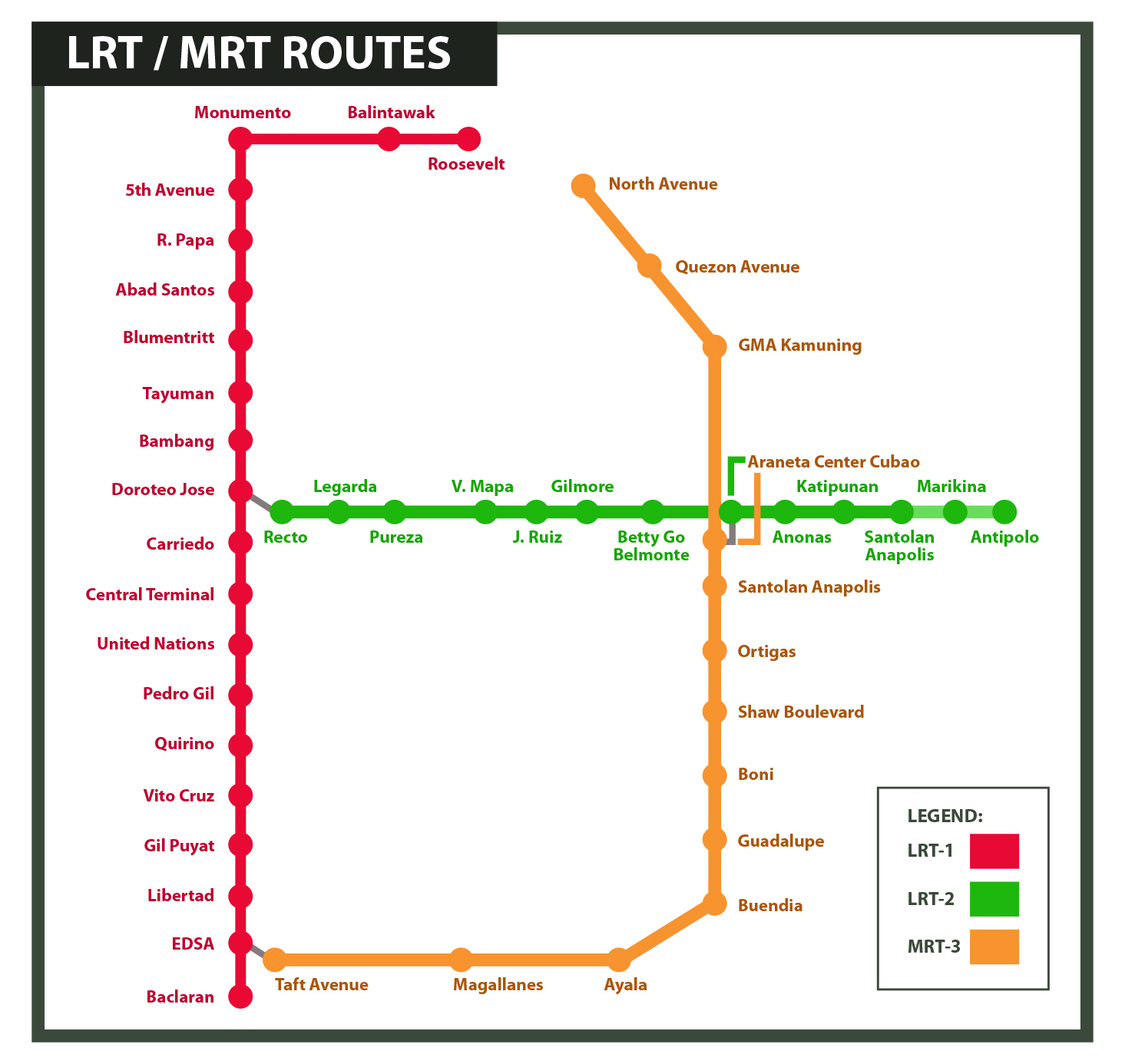Discover The Latest Lrt Programs: Your Ultimate Guide To Streamlined Transportation is a must-read for anyone interested in learning more about the latest advancements in light rail transportation (LRT). This comprehensive guide provides an in-depth look at the different LRT programs that are currently in operation or under development around the world, including their benefits, challenges, and future prospects.
Editor's Note: "Discover The Latest Lrt Programs: Your Ultimate Guide To Streamlined Transportation" have published today date. Given the increasing popularity of LRT systems as a sustainable and efficient mode of transportation, this topic is of paramount importance for urban planners, transportation engineers, and policymakers.
After analyzing and researching several studies and reports, we have compiled this guide to assist our readers in making informed decisions about LRT programs.
Key Differences or Key Takeaways:
| Feature | LRT Programs |
|---|---|
| Benefits |
Reduced traffic congestion Improved air quality Increased economic development Enhanced connectivity Improved accessibility for people with disabilities |
| Challenges |
High upfront costs Lengthy planning and construction process Impacts on existing infrastructure Need for dedicated right-of-way |
Main Article Topics:
- Overview of LRT Systems
- Benefits of LRT Programs
- Challenges of LRT Programs
- Case Studies of Successful LRT Programs
- The Future of LRT Programs
FAQ
This thorough guide provides essential information on LRT programs, answering common questions and addressing potential misconceptions.

NO GRI D Survival Projects: Your Ultimate Guide to Living Off the GRI D - Source www.walmart.com
Question 1: What are LRT programs?
Light Rail Transit (LRT) programs entail the implementation of electric rail systems operating within urban areas. These systems prioritize passenger comfort, environmental sustainability, and cost-effectiveness.
Question 2: How do LRT programs enhance transportation?
LRT programs offer several benefits: reduced traffic congestion, improved air quality through decreased vehicle emissions, increased accessibility to urban areas, and enhanced connectivity within metropolitan regions.
Question 3: What factors should be considered when developing LRT programs?
Effective LRT program development requires careful assessment of population density, land use patterns, existing transportation infrastructure, and potential ridership demand.
Question 4: How are LRT programs funded?
Funding for LRT programs typically involves a combination of sources, including government grants, public-private partnerships, and municipal bonds.
Question 5: What are the long-term benefits of LRT programs?
LRT programs contribute to economic development by attracting businesses and stimulating urban renewal. Additionally, they enhance neighborhood vitality, improve public health through increased physical activity, and reduce household transportation expenses.
Question 6: How can the public participate in LRT program planning?
Public involvement is crucial throughout LRT program development. Municipalities typically host public hearings, conduct surveys, and establish community advisory boards to gather feedback and address concerns.
In conclusion, LRT programs represent a transformative approach to urban transportation. They offer numerous advantages, including reduced congestion, increased accessibility, and improved environmental outcomes. Through careful planning and public engagement, communities can harness the potential of LRT programs to create more sustainable, livable, and efficient cities.
To delve deeper into the multifaceted world of LRT programs, explore our comprehensive guide for further insights and case studies.
Tips
While LRT programs offer a multifaceted approach to enhancing transportation, it is imperative to adopt a strategic mindset to fully leverage their benefits. Here are some insightful tips to optimize the implementation and utilization of LRT systems:
1. Comprehensive Planning:Meticulous planning is crucial for the long-term success of any LRT program. This involves conducting thorough feasibility studies, involving stakeholders in the decision-making process, and developing a comprehensive implementation plan that addresses potential challenges.
2. Sustainable Design:LRT systems should be designed with sustainability in mind, employing eco-friendly technologies and integrating renewable energy sources. This approach not only reduces environmental impact but also aligns with contemporary urban planning principles.
3. Public Engagement:Engaging the public throughout the planning and implementation phases is essential to ensure community buy-in and support. This includes hosting public forums, providing accessible information, and addressing concerns proactively.
4. Efficient Operations:Robust operating procedures are vital for maintaining the reliability and efficiency of LRT systems. Establishing clear protocols for vehicle maintenance, scheduling, and passenger management ensures smooth operations and minimizes disruptions.
5. Integration with Other Transit Modes:LRT systems should seamlessly integrate with existing transit networks, including buses, trains, and ferries. This intermodal connectivity provides greater convenience and accessibility for commuters, encouraging multimodal transportation.
By adhering to these tips, cities and transportation authorities can harness the full potential of LRT programs, leading to more efficient, sustainable, and user-friendly transportation systems. Discover The Latest Lrt Programs: Your Ultimate Guide To Streamlined Transportation
In conclusion, LRT programs offer a transformative approach to urban transportation, addressing the challenges of congestion, environmental sustainability, and accessibility. By adopting a strategic approach that encompasses comprehensive planning, sustainable design, public engagement, efficient operations, and integration with other transit modes, cities can unlock the full benefits of LRT systems and create more livable and connected communities.
Discover The Latest Lrt Programs: Your Ultimate Guide To Streamlined Transportation
Light rail transit (LRT) systems offer a range of benefits, including reduced traffic congestion, improved air quality, and enhanced connectivity. They are an integral part of modern transportation networks, providing efficient and sustainable mobility solutions. Here's a comprehensive guide to help you discover the latest LRT programs and understand their essential aspects:
- Network Expansion: LRT systems are expanding rapidly, with new lines and extensions planned to meet growing demand.
- Technological Advancements: LRT vehicles are becoming increasingly advanced, incorporating features such as automated train operation and real-time passenger information.
- Multimodal Integration: LRT systems are seamlessly integrated with other modes of transportation, such as buses, trains, and ferries, providing convenient connections.
- Environmental Sustainability: LRTs are powered by electricity, reducing emissions and promoting urban air quality.
- Economic Development: LRT systems stimulate economic growth by connecting employment centers, residential areas, and commercial districts.
- Community Benefits: LRTs enhance community livability by providing safe and accessible transportation options, reducing car dependency, and fostering walkability.

Your Ultimate Guide to MRT, LRT, and PNR | Philippine Primer - Source primer.com.ph
In conclusion, the latest LRT programs offer a transformative approach to transportation. They combine network expansion and technological advancements to provide efficient, sustainable, and integrated mobility solutions. Their positive impact extends beyond transportation, contributing to economic development, environmental sustainability, and improved community well-being. As cities and regions continue to embrace LRT systems, they will play a vital role in shaping the future of urban transportation.

Insurance Unlocked: Your Ultimate Guide to Protection and Peace of Mind - Source blog.dailytrendblog.com
Discover The Latest Lrt Programs: Your Ultimate Guide To Streamlined Transportation
Light Rail Transit (LRT) programs are increasingly becoming essential components of modern transportation systems. They offer a range of benefits, including reduced traffic congestion, improved air quality, and enhanced accessibility. This comprehensive guide provides an in-depth exploration of the latest LRT programs and their impact on urban transportation.

Your Ultimate Guide to the Euro 2024 Final - QuikReader - Source www.quikreader.com
LRT programs encompass various aspects, from planning and design to construction and operation. This guide delves into the latest technologies and best practices in each of these areas, showcasing innovative approaches and successful implementations. By examining real-life case studies, readers can gain valuable insights into the challenges and solutions encountered in the development and execution of LRT projects.
The practical significance of this understanding extends beyond theoretical knowledge. It empowers decision-makers, planners, and transportation professionals with the necessary tools to evaluate, implement, and optimize LRT programs. By leveraging the latest advancements and lessons learned, they can unlock the full potential of LRT systems to enhance urban mobility, improve quality of life, and drive sustainable development.
Conclusion
The exploration of "Discover The Latest Lrt Programs: Your Ultimate Guide To Streamlined Transportation" has highlighted the transformative impact of LRT programs on urban transportation. These programs offer a comprehensive solution to address traffic congestion, air pollution, and accessibility challenges while promoting sustainable development and enhancing quality of life.
As cities continue to grow and transportation needs evolve, LRT programs will play an increasingly critical role in shaping the future of mobility. By embracing innovation, leveraging best practices, and fostering collaboration, we can unlock the full potential of LRT systems and create more livable, sustainable, and connected cities for generations to come.
